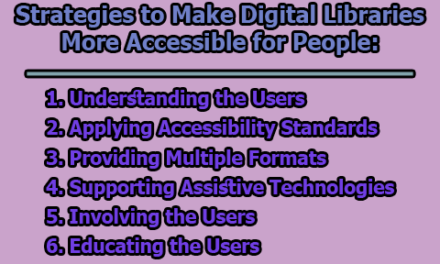Benefits and Challenges of Implementing RFID Systems in Libraries:
In the ever-evolving landscape of library management, Radio Frequency Identification (RFID) systems have emerged as a revolutionary technology. By utilizing small tags emitting radio signals to store and transmit data, libraries can enhance their operations, services, and security. However, the implementation of RFID systems comes with both benefits and challenges that demand careful consideration. In this article, we will delve into the benefits and challenges of implementing RFID systems in libraries.
Benefits of RFID Systems in Libraries:
RFID systems have become increasingly popular in libraries, offering a range of benefits that enhance efficiency, security, and overall user experience. Here are some of the key advantages of implementing RFID systems in libraries:
1. Efficient Circulation: RFID systems streamline the circulation process by allowing librarians to check in and check out multiple items simultaneously. Unlike traditional barcodes, RFID tags can be read without requiring a direct line of sight or precise alignment, resulting in faster and more efficient transactions.
2. Inventory Management: RFID technology facilitates quick and accurate inventory management. Librarians can conduct inventory checks more frequently and with greater ease, reducing the time and effort traditionally associated with manual inventory processes. This helps libraries maintain up-to-date records of their collections.
3. Shelf Management: RFID systems enable precise tracking of the location of books on library shelves. This feature aids librarians in organizing and maintaining the collection efficiently. It minimizes the chances of misplacement and makes it easier to locate specific items, contributing to an overall improvement in library organization.
4. Self-Service Options: With RFID technology, libraries can introduce self-service stations, allowing patrons to independently check out and return items. This not only reduces the workload on library staff but also provides patrons with greater autonomy, contributing to a more seamless and convenient library experience.
5. Reduced Waiting Times: The efficiency of RFID systems translates to reduced waiting times for library users. The quick scanning and processing of materials contribute to shorter lines at circulation desks, improving the overall experience for patrons and enhancing the library’s reputation for customer service.
6. Enhanced Security: RFID systems enhance library security by offering features such as anti-theft alarms. If an unauthorized item is detected leaving the library premises, the system can trigger an alarm or lock gates, discouraging theft and protecting the library’s assets.
7. Locating Misplaced Items: RFID tags enable real-time tracking of library materials. This capability is particularly useful in locating misplaced or missing items. Librarians can pinpoint the exact location of a book within the library, saving time and resources that would otherwise be spent on manual searches.
8. Extended Patron Services: RFID systems provide libraries with the capability to offer extended services to patrons. This includes features such as self-checkout, online renewal of materials, and automated fine payments. These added conveniences contribute to an enhanced user experience and increased patron satisfaction.
9. Data Insights: RFID systems generate valuable data on library usage patterns, popular items, and circulation trends. Librarians can leverage this information to make informed decisions about collection development, resource allocation, and the overall improvement of library services.
10. Adaptability and Scalability: RFID systems are adaptable to various library sizes and types. Whether in a small community library or a large academic institution, RFID technology can be tailored to meet the specific needs and scale of the library, making it a versatile solution for different environments.
Challenges of RFID Systems in Libraries:
While RFID systems offer several benefits for libraries, their implementation is not without challenges. Libraries considering the adoption of RFID technology should be aware of these potential hurdles:
1. High Initial Costs: One of the primary challenges associated with RFID systems is the initial investment required. The cost of RFID tags, readers, and associated infrastructure can be significant. This financial burden may pose challenges for libraries with limited budgets, potentially delaying or hindering the adoption of RFID technology.
2. Privacy Concerns: RFID systems involve the collection and storage of sensitive patron data, including borrowing history and personal information. Privacy concerns may arise due to the potential misuse or unauthorized access to this data. Libraries must implement robust security measures and adhere to data protection regulations to address these concerns and build trust among patrons.
3. Operational Issues: Environmental factors can interfere with RFID signals, leading to operational challenges. Factors such as metal interference, electronic interference, or radio frequency noise can impact the performance of RFID systems. Libraries must conduct thorough site assessments and implement measures to mitigate these issues.
4. Integration with Existing Systems: Libraries often have existing systems in place, such as integrated library systems (ILS) or management software. Integrating RFID systems with these existing technologies can be a complex process, requiring careful planning and coordination. Compatibility issues may arise, necessitating updates or modifications to ensure seamless integration.
5. Staff Training and Resistance: Implementing RFID systems introduces a new technology that requires staff training for effective use. Resistance to change may be encountered among staff members who are accustomed to traditional library management methods. Libraries need to invest time and resources in comprehensive training programs to ensure staff members are proficient in operating and troubleshooting RFID systems.
6. Data Security and Compliance: RFID systems involve the handling of sensitive patron information. Ensuring data security and compliance with privacy regulations is paramount. Libraries must establish robust policies and practices for data protection, regularly update their systems to address vulnerabilities, and educate staff on the importance of safeguarding patron information.
7. Tagging and Maintenance: The process of tagging each item in the library collection with RFID tags can be labor-intensive and time-consuming. Libraries need to allocate resources for tagging, and regular maintenance is essential to ensure the continued functionality of the RFID system. Tags may degrade over time, requiring replacement, and the entire system may need updates to keep pace with evolving technology.
8. User Education: Patrons may require education on how to use the new RFID-enabled services. Libraries need to invest in user education programs to ensure that patrons are familiar with self-checkout processes, online renewal options, and other RFID-related features. Clear communication and instructional materials are crucial to a smooth transition.
9. Vendor Selection and Support: Choosing the right RFID vendor is crucial for successful implementation. Libraries must carefully evaluate vendors based on the reliability of their products, ongoing support, and the ability to adapt to future needs. Inadequate vendor support can lead to prolonged downtime and disruptions in library services.
10. Regulatory Compliance: Libraries implementing RFID systems must navigate various regulations related to data protection, RFID technology standards, and industry-specific compliance requirements. Ensuring that the RFID system aligns with these regulations is essential to avoid legal issues and maintain the trust of patrons.
Best Practices for Implementing RFID Systems:
Implementing RFID systems in libraries requires careful planning and execution to ensure a smooth transition and maximize the benefits of the technology. Here are some best practices for libraries considering the adoption of RFID systems:
1. Needs Assessment: Before implementing RFID systems, conduct a comprehensive needs assessment. Identify specific challenges and areas where RFID technology can bring the most value to your library. Consider factors such as circulation volume, collection size, and patron needs.
2. Comparison of Options: Evaluate different RFID vendors, products, and services. Compare their features, scalability, and compatibility with existing library systems. Choose a solution that aligns with your library’s unique requirements and allows for future expansion.
3. Strategic Planning: Develop a detailed implementation plan that outlines the steps, timelines, and resources required for the RFID system deployment. Consider the impact on library workflows, staff responsibilities, and patron interactions. Ensure that the plan addresses potential challenges and includes contingencies.
4. Staff Involvement and Training: Involve library staff early in the implementation process. Provide comprehensive training to familiarize them with the new technology, operational procedures, and troubleshooting techniques. Address any concerns or resistance to change and emphasize the benefits of RFID systems in improving efficiency.
5. User Education: Educate library patrons about the new RFID-enabled services. Develop clear and user-friendly instructional materials, including signage, brochures, and online guides. Conduct workshops or informational sessions to help patrons understand the self-checkout process, online renewal options, and other RFID-related features.
6. Data Security and Privacy Policies: Establish robust data security and privacy policies to address concerns related to patron information. Clearly communicate how personal data will be handled, stored, and protected. Ensure compliance with relevant data protection regulations and regularly update security measures to address emerging threats.
7. Tagging and Inventory Preparation: Plan and allocate sufficient resources for tagging library materials with RFID tags. Consider outsourcing this task to specialized services if needed. Prioritize high-demand items and materials in circulation. Conduct a thorough inventory to ensure accurate tagging and data migration.
8. Integration with Existing Systems: Work closely with your library’s IT department to seamlessly integrate RFID systems with existing library management systems (ILS). Test the integration thoroughly to identify and address any compatibility issues. Ensure that data migration is accurate and does not disrupt library services.
9. Allocate Adequate Time and Budget: Allocate realistic timeframes and budgets for the entire RFID implementation process. Consider factors such as tagging, installation, testing, and staff training. Avoid rushing the implementation to prevent errors and ensure a successful transition.
10. Performance Evaluation: Regularly evaluate the performance of the RFID system after implementation. Measure key performance indicators, including circulation speed, inventory accuracy, and user satisfaction. Gather feedback from both staff and patrons to identify areas for improvement and optimization.
11. Scalability Considerations: Choose an RFID system that is scalable to accommodate future growth and changes in library operations. Consider factors such as the ability to add new RFID-enabled services, expand the collection, or integrate additional technologies.
12. Ongoing Vendor Support: Select a reputable RFID vendor that provides ongoing support and maintenance. Ensure that the vendor offers timely updates, addresses any issues promptly, and provides training for new features or system upgrades. Establish a strong relationship with the vendor to facilitate long-term success.
By following these best practices, libraries can navigate the challenges of implementing RFID systems effectively and capitalize on the technology’s potential to enhance operations and user experiences.

Assistant Teacher at Zinzira Pir Mohammad Pilot School and College










